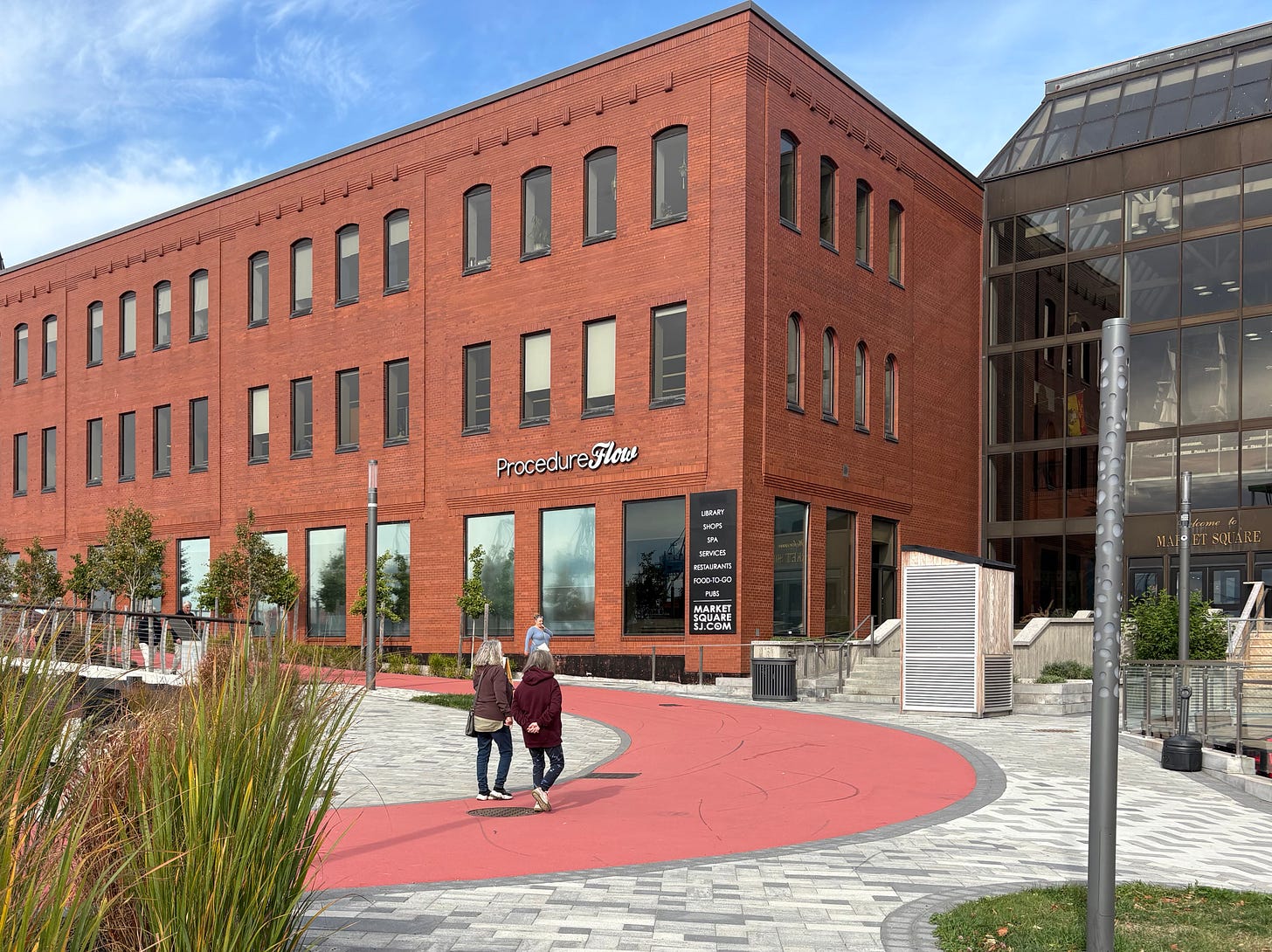Convincing Homegrown Investors to Buy Local
Atlantic Canada's Sandpiper Ventures and Mexico City show what happens when local capital backs local innovation – sustainable wealth with global reach

Atlantic Canada isn’t poor; it’s just that a lot of homegrown capital is locked away.
The region has a high concentration of privately-held wealth, much of it rooted in rural-based resource sectors such as forestry, agriculture, fisheries and aquaculture, and in supporting supply chains via trucking, construction and more recently, software and machine learning.
Building the case for direct investment in strategic sectors by the region’s wealthiest families and regional pension funds could help attract and anchor capital by building companies with global reach, anchored by local expertise and knowledge.
In places such as Mexico City and the European Union, this isn’t simply wishful thinking; it is embedded in economic strategy and policy.
For Mexico City, aiming investment attraction strategies at local investors is about attracting capital with staying power, a policy that began under then-mayor and now current Mexican president, Claudia Sheinbaum.
What began in Mexico City, is now reflected in Plan México, a national place-based investment and economic development strategy, introduced in January 2025 to mark President Sheinbaum’s 100th day in office.
It seeks to use investment to reduce regional inequities through place-based sectoral hubs, which in Mexico City includes: biopharma and medical devices, digital economy and data centres, advanced manufacturing, professional services, creative industries, retail and e-commerce, tourism and hospitality, and green energy and sustainability.
“Mexico has actually been very successful in attracting foreign capital,” said Arturo Palacios Romo, general director of investment attraction for Mexico City and one of the speakers at the OECD-New Brunswick conference on place-based economic development held in Moncton in early October.
“However, the capital that Mexico has attracted in the past 15 years has not translated into benefits for the common citizen, which was our mission.”
Foreign Direct Investment Isn’t Enough
Mexico City, with a population hovering near 23 million, is North America’s largest metropolitan centre; however, like Atlantic Canada, its productivity has been stagnant for decades.
One of the causes was China’s entrance into the global free trade system, which cost Mexico market share with its primary trade partner, the United States.
In response, Mexico sought to diversify, signing free trade agreements with over 50 countries, but the end result was a further concentration and dependence on American investment and trade, which now accounts for 85 per cent of Mexican exports.
Now Mexico, like Canada, which sends 75 per cent of its exports to the U.S., must move quickly to reduce that dependence in the face of increasing American economic and political aggression.
“We focused on the wrong thing,” said Romo, looking with hindsight at previous economic policies, which prioritized attracting foreign capital without an equivalent strategy for unlocking domestic capital.
“We should not have focused just on opening doors and having more partners. We should have focused as well on creating local, endogenous (internal) capacities, innovative sectors and value-added from our companies and from our country.”
Local Investors Don’t Traditionally Buy Local
True diversification, said Romo, will happen when Mexico City can direct more capital towards strengthening local economies that improve life for local residents.
One way to do that is to attract investment from the people in the neighbourhood.
However, that is not a simple task because these types of investors – which include wealthy individuals, pension fund managers, and family offices, which are private wealth management advisory firms that serve ultra-high-net worth families, often across generations – tend to be conservative, investing in things such as real estate, government bonds, and established multinationals.
“When they do invest in tech, they do it abroad,” says Romo.
Side Walks is fully funded by readers and organizations that support our mission to produce Canadian news and cultural commentary. If you’re enjoying this story, please consider becoming a paid subscriber, $8/month or $80/year. You can also sign up for a free subscription. All subscriptions deliver Side Walks directly to your email inbox, and you can also read along on the Substack app.
Convincing local investors to include emerging innovations and strategic sectors such as health and green energy technologies in their investment portfolios requires Romo and his team to practice old-fashioned, face-to-face relationship-building.
“Part of our job has been to familiarize them and socialize what are the advantages of being involved in creating this innovation ecosystem within Mexico, with Mexican players,” said Romo, who has found success introducing local investors to local business leaders who have successful track records in emerging sectors.
Through conversations, these local experts answer investors’ questions to help them understand new tech-based sectors and reduce these traditionally conservative investors’ fear of risk.
“In the end, the key message to convey and to convince them is to trust the local players.”
Sandpipe Ventures Invests at Home
That’s the logic behind Sandpiper Ventures, the Atlantic Canadian venture capital fund that invests in early-stage, seed and Series A women-led companies.
The fund is led by the managing partner trio of Rhiannon Davies, a strategic investor with international experience in scaling health and tech ventures; Sarah Young, a communications expert and public affairs strategist; and Cathy Bennett, a seasoned entrepreneur and former Newfoundland and Labrador finance minister.
Created in 2020, its initial fund of $20 million closed in 2022 with notable limited partner investments from four Canadian banks, the four Atlantic provinces, Frank Sobey’s Firinn Investments, Annette Verschuren and Gerry Pond.

“Startups from the region often face double negatives, developing breakthrough technologies in an underrecognized market and raising capital to scale,” said Bennett, during the OECD panel discussion on driving regional competitiveness through innovation, SMEs and entrepreneurship.
“We set out to change that. Sandpiper is itself a place-based innovation asset. As a women-led anchor fund in Atlantic Canada, we channel regional strengths into global, competitive companies, and in doing so, we, with our founders and investors, convert local expertise into investment ventures directly.”
To date, those investments have created 184 jobs in Atlantic Canada and generated $28 million in regional gross domestic product (GDP), benchmarks that place it in the top tier of North American funds in performance.
Sandpiper is currently raising its second, $50-million fund, which Bennett says aims to invest in 14-16 companies.
“Our portfolio companies gain from spillover effects of major industry players in the region and partnerships with Atlantic universities and incubators,” she said. “We focus on sectors where our region holds an advantage but also global potential – digital health, oceans, clean energy, deep tech and advanced materials.”
Place-based Strategies Are Bottom-Up
Sandpiper’s goal is to build a multi-stakeholder ecosystem to increase regional competitiveness, a model that aligns with the EU’s Smart Specialisation Strategy (S3), a place-based policy framework, informed and supported by the OECD.
Designed to help European countries and regions identify and invest in their distinctive strengths as part of the larger EU economic market, the strategy places an emphasis on local leadership and entrepreneurial activity.
As Mexico City and Atlantic Canada’s Sandpiper Ventures illustrate, local investors can sit at the heart of regional wealth creation by investing in the next generation of local inventors, entrepreneurs and creatives.
To drive greater wealth creation in Atlantic Canada, those who control local pools of capital can step up and bet on our own.
Side Walks is fully funded by readers and organizations that support our mission to produce Canadian news and cultural commentary. If you’re enjoying this story, please consider becoming a paid subscriber, $8/month or $80/year. You can also sign up for a free subscription. All subscriptions deliver Side Walks directly to your email inbox, and you can also read along on the Substack app.
If you enjoyed this column, please share the love with others who you think would enjoy the conversation we’re having on Side Walks. We’re building a community interested in finding common ground around complex issues by focusing on local repercussions and opportunities caused by national and global issues. Cheers!
Stroll Over to Side Walks For More Stories
Place-based Development Story Series: East Coast Ambition Starts at Home
Trade Talks; Capital Walks: Canadian businesses have access to global markets, but infrastructure and policy certainty are needed to seal the deal, says Aaron Fowler, Canada’s chief trade negotiator for international trade.
How My Walk on The Beach Will Influence National Trade Policy (tis true!): ACAP Saint John is a great example of how giving power back to people can help solve big, complex issues where the environment and economy merge.
Trade Reorientation Story Series: Saint John At The Crossroads
The Corner At The Centre of Things: Canada’s muscular new trade agenda is picking up speed; are the neighbourhoods in and around Simms Corner in West Saint John ready for what’s coming down the track?
Saint John’s Second Act: Global alliances, private investments, and cold chain innovations are transforming the Port of Saint John, but the real test will come inland.
Culture
Affirmation Across the Generations: ‘Lilith Fair: Building a Mystery’ by Canadian filmmaker Ally Pankiw is a rallying call for change, inspired by Sarah McLachlan and her successful all-women music festival.
Review: Uiksaringitara (Wrong Husband): TIFF’s 2025 Best Canadian Feature award-winner from acclaimed Inuit filmmaker Zacharias Kunuk returns with a film about promises, love and northern spirits.
Side Walks Home Page
Catch up on all our stories at www.sidewalksmedia.ca.


